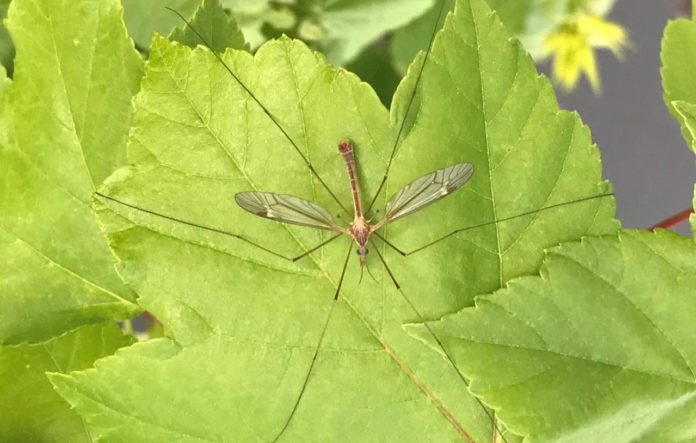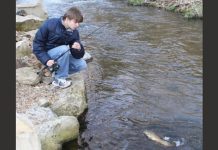Though they’re called “May” flies, there are just as many mayflies around in June as there are in May, and sometimes there are big hatches in July, as well.
Fish rarely ignore a food source, and these aquatic-born insects can be a big one. They are so abundant in Lake Guntersville, for example, residents who leave their dock lights on during a hatch often wake up to find them stacked six inches deep under their lights. (A very smelly mess ensues if the bugs are not cleaned off before the sun hits them, to be sure.)
Mayflies can concentrate bass, bluegills, crappies and other species, but they’re mostly ignored by anglers. Those looking for fast fishing action can take advantage of the feed by tossing almost any sort of small topwater in an area where the insects are falling on the water, or where they’re emerging from the surface. (They hatch in water, emerge to sit on lakeside trees for a few hours to complete their wing growth, then fly around for a single day to mate, then die, often falling back into the water.)
It’s not hard to find places where mayflies are doing their thing—run your boat along any shoreline with overhanging trees or with dock lights over the water just at dawn and you’re likely to see hundreds of them swarming. The water below these areas almost always has an assortment of fish in May and June.
Fish a small topwater lure—it doesn’t have to look like a mayfly—and you’ll catch not only largemouths and whopper bluegills but also other species that don’t usually hit topwaters including crappies, catfish and even an occasional drum.
I’ve done well at Guntersville with the Rebel Crickhopper as well as an F4 Rapala. These tiny lures are best fished on ultra-light spinning tackle and 6-pound-test mono, which adds to the fun when a sizeable bass or catfish latches on. I’ve caught bass to six pounds on the F4, a tricky proposition on the fly-weight tackle and tiny hooks.
Flies that look like mayflies also do very well, of course. Sponge spiders in a brown-yellow color are super effective. Don’t be scared off by the high price of some fly fishing tackle. For this type of fishing, you can get by just fine with a $39 Pflueger package that includes rod, reel and line, and there are plenty of online videos to show you the basics of casting. You’ll only need to throw 30 to 50 feet to get plenty of action when the flies are hatching.
If you don’t have a fly rod, you can throw these hung 18 inches below a casting bubble on spinning gear. Usually, if you cast where the insects are falling into the water, you don’t even have to move the bug—the fish just come up and suck it down.
Bluegill sometimes bed near areas where mayflies show up as well, giving you a double guarantee of action. The tasty bream typically are on the beds on the weeks of full and new moon in May, June and July across much of Alabama. Look for their bowl-shaped beds on gravel or shell bottom at depths of 18 inches to 3 feet.
To be sure, if you’re a dedicated tournament basser chasing mayflies is no way to win, but if you’re just out for some fun fishing on the weekend, they almost guarantee action—and a fish fry at the end of the day.
Credit: Source link





























